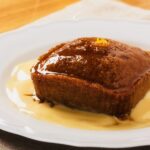Somalia, located in the Horn of Africa, boasts a rich culinary tradition that reflects its diverse cultural heritage and proximity to the Indian Ocean. Somali cuisine combines flavors and ingredients from Arabian, Persian, Indian, and African influences, resulting in a unique and vibrant food culture. In this article, we embark on a culinary journey to discover the top 10 most eaten foods in Somalia, showcasing the country’s culinary delights.
- Canjeero (Injera):
Canjeero, also known as Injera, is a staple food in Somalia. This spongy, pancake-like bread is made from fermented teff flour, a gluten-free grain. Canjeero is typically eaten with various stews, such as Maraq (a Somali spiced soup) or Suqaar (a meat dish). It serves as a foundation for many Somali meals and is central to the country’s dining traditions.
- Suqaar:
Suqaar is a popular meat dish in Somalia, made with thinly sliced beef, goat, or chicken. The meat is stir-fried with an assortment of aromatic spices, including coriander, cumin, turmeric, and garlic, resulting in a flavorful and tender dish. Suqaar is often accompanied by rice, pasta, or Canjeero.
- Bariis:
Bariis, meaning rice in Somali, is an essential component of Somali cuisine. Fragrant basmati rice is cooked with a combination of spices, such as cardamom, cloves, cinnamon, and cumin. Bariis is often adorned with vegetables, meat, or fish, creating a delightful one-pot meal.
- Somali-style Pasta:
Somali-style pasta is a fusion dish that reflects the Italian influence on Somali cuisine. It combines pasta with a variety of ingredients, such as onions, tomatoes, garlic, and Somali spices. This unique blend of flavors creates a comforting and hearty meal that is widely enjoyed across the country.
- Muufo:
Muufo is a traditional Somali flatbread made from cornmeal or sorghum flour. It is dense and slightly sweet, with a distinctive taste. Muufo is commonly served alongside stews, soups, or as a breakfast option with ghee (clarified butter) and honey.
- Cambuulo (Adzuki Beans):
Cambuulo, a dish made from adzuki beans, is a Somali comfort food cherished for its simplicity and taste. The beans are slow-cooked with onions, garlic, and a blend of spices until tender. Cambuulo is often served with rice or Muufo, providing a nutritious and satisfying meal.
- Xalwo (Halva):
Xalwo, or Halva, is a popular Somali dessert enjoyed on special occasions. It is a sweet confection made from semolina, sugar, ghee, and flavored with cardamom or rosewater. Xalwo is often garnished with nuts and served in small, colorful squares.
- Lahoh:
Lahoh is a Somali pancake made from a fermented batter consisting of flour, yeast, water, and sometimes, a dash of sugar. The batter is left to ferment overnight, resulting in a tangy and slightly sour taste. Lahoh is typically rolled and served with butter or honey, making it a delightful breakfast or snack option.
- Malawah:
Malawah is a flaky, layered flatbread that is a favorite breakfast item in Somalia. The dough is prepared with flour, yeast, sugar, and cardamom, and then rolled out and fried until golden brown. Malawah is often enjoyed with ghee, honey, or a sprinkle of sugar, providing a sweet and indulgent start to the day.
- Sambuusa (Samosa):
Sambuusa, a popular street food in Somalia, is a deep-fried pastry filled with a savory mixture of spiced meat or vegetables. Influenced by Indian cuisine, Somali-style sambuusas are often triangular in shape and bursting with flavor. They are commonly served as appetizers during festive gatherings or as a quick snack.
Somalia’s culinary landscape is a fascinating blend of flavors, ingredients, and cultural influences. From the spongy Canjeero to the aromatic Suqaar, and the sweet Xalwo to the savory Sambuusa, each dish represents a unique aspect of Somali cuisine. Exploring the top 10 most eaten foods in Somalia provides a glimpse into the country’s rich gastronomic heritage and its ability to create dishes that are both delicious and deeply rooted in tradition.








